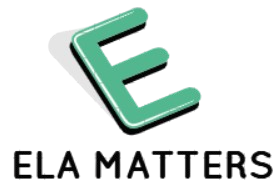Introduction
Have you ever received a call from a number you didn’t recognize and wondered, “Who could that be?” With millions of calls flooding our phones each day, it’s no surprise that many of us are cautious about answering unfamiliar numbers. In this article, we’ll take an in-depth look at the number 805-354-1683, exploring who might be calling, the reasons behind unknown calls, and how to decide whether you should answer or ignore such calls.
Understanding Caller ID and Unknown Numbers
Before diving into the specifics of the number 805-354-1683, it’s essential to understand how caller ID works. Caller ID is a service provided by telephone companies that displays the caller’s number on your device. However, it isn’t always foolproof. Scammers and telemarketers can sometimes spoof or hide their real numbers, leaving you with just a string of digits on your screen.
- How Caller ID Technology Works
Caller ID transmits a caller’s information along with the call signal. This data is intended to let you know who is calling. Yet, this system has its limitations. For example, if the call is made over the internet or if the caller uses a spoofing service, the displayed number might not reflect the actual source of the call. - Limitations and Common Pitfalls
Not every unknown number is a threat. Sometimes, important calls might come from numbers not saved in your contacts. Nonetheless, the increasing prevalence of fraudulent calls means that you need to be cautious, especially if the caller uses a number like 805-354-1683, which might not immediately ring any bells.
Identifying 805-354-1683
The number 805-354-1683 might appear on your caller ID, prompting a mix of curiosity and concern. How can you determine who is calling from this number? The answer often lies in a combination of reverse phone lookup tools and some common-sense research.
- What is a Reverse Phone Lookup?
A reverse phone lookup is a service that allows you to input a phone number to see who it belongs to. There are many websites and apps available that provide this service, sometimes even revealing details about the caller’s location and whether it has been associated with spam or scam calls. - Analyzing the Number 805-354-1683
When you see 805-354-1683, the first step is to perform a reverse lookup. Often, numbers in this format, especially if they originate from the 805 area code (which covers parts of California), can be linked to local businesses, telemarketing companies, or even scam operations. However, keep in mind that numbers can be spoofed, meaning that the number you see might not be the actual number from which the call is being made.
Common Reasons for Unknown Calls
Understanding why you might receive a call from a number like 805-354-1683 can help you decide how to handle it. Here are some of the most common reasons:
- Telemarketing and Sales Calls
Many businesses use automated dialing systems to reach potential customers. Telemarketing calls are often the cause behind unfamiliar numbers popping up on your phone. While not all telemarketing calls are harmful, they can sometimes be intrusive or annoying. - Scam and Fraud Attempts
Scammers have become increasingly sophisticated. They often use caller ID spoofing to mask their identity, making it appear as though the call is coming from a local or legitimate number. These calls might try to trick you into revealing personal information, making payments, or even installing malware on your device. - Wrong Numbers and Misdials
Sometimes, an unknown number is simply a case of a misdial or an error. It’s not always a sign of something nefarious, but it’s important to be cautious and ensure that you don’t inadvertently give out personal information.
The Rise of Robocalls
In recent years, the phenomenon of robocalls has surged, and it’s important to understand their role in the landscape of unknown calls.
- Defining Robocalls in Today’s Landscape
Robocalls are automated calls that use prerecorded messages. They can be used for a variety of reasons, ranging from legitimate purposes (such as appointment reminders) to scams. When you see a number like 805-354-1683, there’s a chance it could be part of a mass robocall campaign. - How Technology Has Enabled Robocalling
Advances in technology have made it easier for scammers to deploy robocalls at a massive scale. With inexpensive software and VoIP (Voice over Internet Protocol) technology, they can mask their numbers and target thousands of people simultaneously.
Potential Risks of Answering Unknown Calls
Answering an unknown call can sometimes put you at risk. Let’s examine some of the potential dangers:
- Privacy Concerns and Data Security
When you answer a call from an unknown number, there’s always a risk that your personal information could be compromised. Scammers are known to engage in social engineering tactics, where they try to trick you into revealing sensitive data like your Social Security number, credit card details, or banking information. - Exposure to Scams and Malware
Some calls are designed not just to steal your information but also to install malware on your smartphone. Even if the call itself seems harmless, if you follow a link or provide personal details during the conversation, you might inadvertently expose your device to harmful software.
When Should You Answer?
Deciding whether to answer a call from 805-354-1683 depends on several factors. Here are some guidelines to help you make an informed decision:
- Evaluating the Legitimacy of a Call
Ask yourself a few key questions before answering. Do you recognize the area code? Have you recently been expecting a call from a business or service provider? If the answer is no, it might be best to let the call go to voicemail. - Personal Safety and Privacy Considerations
Your safety should always come first. If there’s any doubt about the legitimacy of a call, it’s better to err on the side of caution. Trust your instincts—if something feels off, you’re probably better off not answering.
How to Safely Handle Unknown Calls
There are practical steps you can take to manage unknown calls without compromising your privacy.
- Best Practices for Screening Calls
One of the simplest ways to screen calls is to let unknown calls go to voicemail. Most scammers won’t leave a message, and if it’s a legitimate call, the caller will likely leave a message so you can call back. Additionally, consider using a second line or a virtual number for situations where you’re unsure about the caller’s identity. - Utilizing Modern Call-Blocking Apps and Services
Technology offers a range of apps that can help you filter out unwanted calls. Many smartphones now come with built-in features that automatically identify potential spam numbers. There are also third-party apps designed to block robocalls and spam calls before they even reach you.
Steps to Identify a Caller
When you receive a call from a mysterious number, there are several steps you can take to identify the caller before you decide whether to engage.
- Using Online Reverse Lookup Tools
A quick online search using reverse lookup tools can often provide insight into who might be behind a number like 805-354-1683. Many websites compile databases of known scam numbers and telemarketers, allowing you to see if the number has been reported by others. - Consulting Regulatory Bodies and Trusted Sources
Organizations such as the Federal Trade Commission (FTC) or local consumer protection agencies often provide resources and updates on current scams. Checking their websites can offer additional validation on whether a particular number is associated with fraudulent activity.
What to Do If It’s a Scam
If you determine that a call from 805-354-1683 is indeed a scam, it’s important to know how to handle it properly.
- Reporting the Call to Authorities
Reporting suspicious calls to authorities like the FTC or your local consumer protection agency is crucial. This helps track scam trends and can potentially protect others from falling victim to similar tactics. - Practical Steps to Verify Legitimacy
If you’re ever in doubt about the legitimacy of a call, ask for additional information before divulging any personal details. Legitimate businesses will have no issue verifying their identity or providing contact information that you can independently verify.
Expert Opinions and Statistics
Telecommunications experts have weighed in on the subject of unknown calls, and the statistics paint a clear picture of the current landscape.
- Insights from Telecommunications Experts
Experts warn that the increase in caller ID spoofing is largely due to advancements in technology that make it easier to mask numbers. They advise that individuals should always be cautious when dealing with calls from unfamiliar numbers, especially if the conversation steers towards sensitive topics like personal finance. - Latest Statistics on Scam and Robocalls
Recent studies have shown that millions of scam calls are made every year, with a significant number coming from spoofed numbers. These calls often follow a pattern: a sense of urgency, a request for personal information, or even threats if you do not comply. Staying informed about these trends can help you recognize the red flags and protect yourself from potential fraud.
Case Studies and Real-Life Experiences
Real-life experiences can offer valuable lessons on how to handle unknown calls.
- Anecdotes from Individuals
Consider the story of a homeowner who received a call from 805-354-1683. Initially, they were curious and answered the call, only to be met with a high-pressure sales pitch. After a quick online search, they discovered that the number had been linked to several telemarketing scams. Their experience led them to adopt more cautious practices, such as letting unknown calls go to voicemail and using call-blocking apps. - Lessons Learned and Actionable Takeaways
Many individuals have shared their experiences of nearly falling victim to scams. The consensus is clear: if you’re ever unsure about a caller’s identity, it’s best to be cautious. Using modern technology to screen calls, reporting suspicious numbers, and educating yourself about common scam tactics are the best defenses against unwanted calls.
Future Trends in Caller Identification
As technology continues to evolve, so too will the methods used by both legitimate callers and scammers.
- Innovations in Caller Verification Technology
The future may bring enhanced caller ID systems that can more accurately verify the identity of the caller. Some companies are developing blockchain-based verification systems that promise to make it much harder for scammers to spoof numbers. - Potential Regulatory and Policy Changes
Regulatory bodies are also stepping up their game. With increasing pressure from consumers and lawmakers alike, there may be new rules and standards implemented that force telecom companies to provide more reliable caller identification services. This could mean a significant reduction in the number of fraudulent calls you receive.
Conclusion
Navigating the world of unknown phone calls can be challenging, but knowledge is your best defense. Understanding how caller ID works, knowing the potential risks, and using available tools to verify who’s calling can help you make informed decisions. The number 805-354-1683 may or may not be associated with something sinister, but by following the tips and strategies outlined in this article, you can protect your personal information and avoid falling victim to scams. Remember, when in doubt, trust your instincts and let the call go to voicemail until you can verify its legitimacy.
FAQs
What should I do if I receive a call from 805-354-1683?
If you’re unsure about the call’s legitimacy, it’s best to let it go to voicemail. You can always use a reverse phone lookup tool later to check the number’s background before calling back.
Are calls from 805-354-1683 always scams?
Not necessarily. While the number might be associated with telemarketing or scam attempts, there’s also a chance it could be a legitimate business call. Always verify before sharing personal information.
How can I block unwanted calls from numbers like this?
Most smartphones offer built-in call-blocking features. Additionally, third-party apps specifically designed to block spam and robocalls can help filter out unwanted calls automatically.
Is caller ID spoofing common, and how does it work?
Yes, caller ID spoofing is quite common. Scammers use technology to mask their true number, making it appear as if the call is coming from a different source. This is why it’s important to verify unknown numbers independently.
What steps can I take to protect myself from scam calls?
Educate yourself on common scam tactics, use call screening and blocking tools, and report any suspicious calls to the appropriate authorities. Always be cautious when sharing personal information over the phone.






